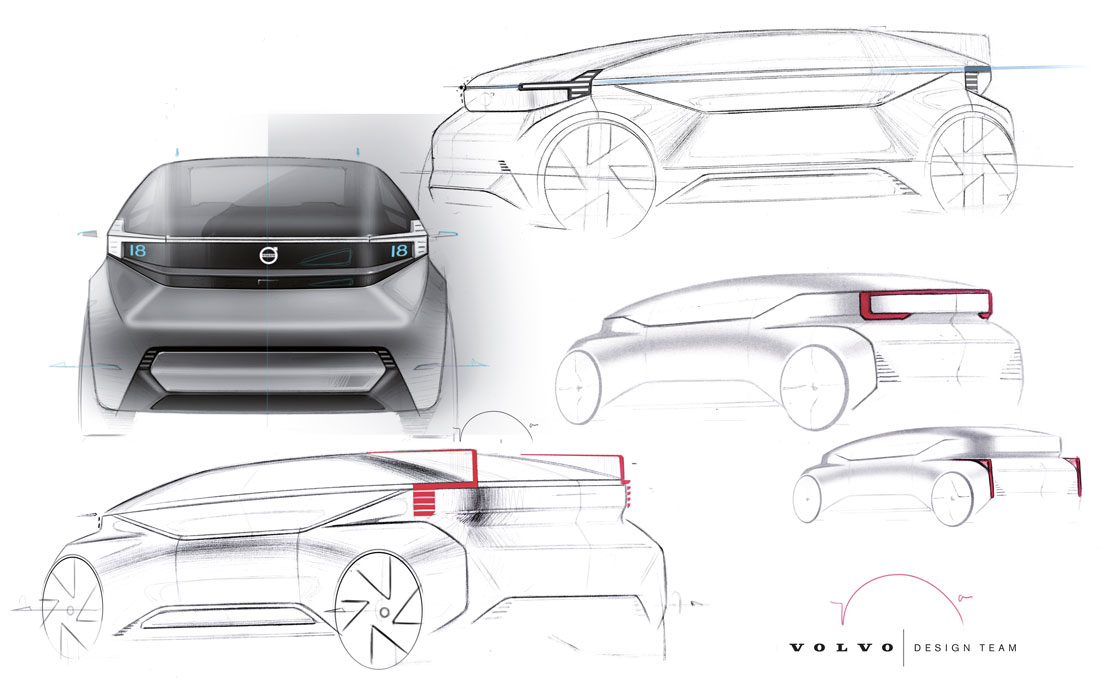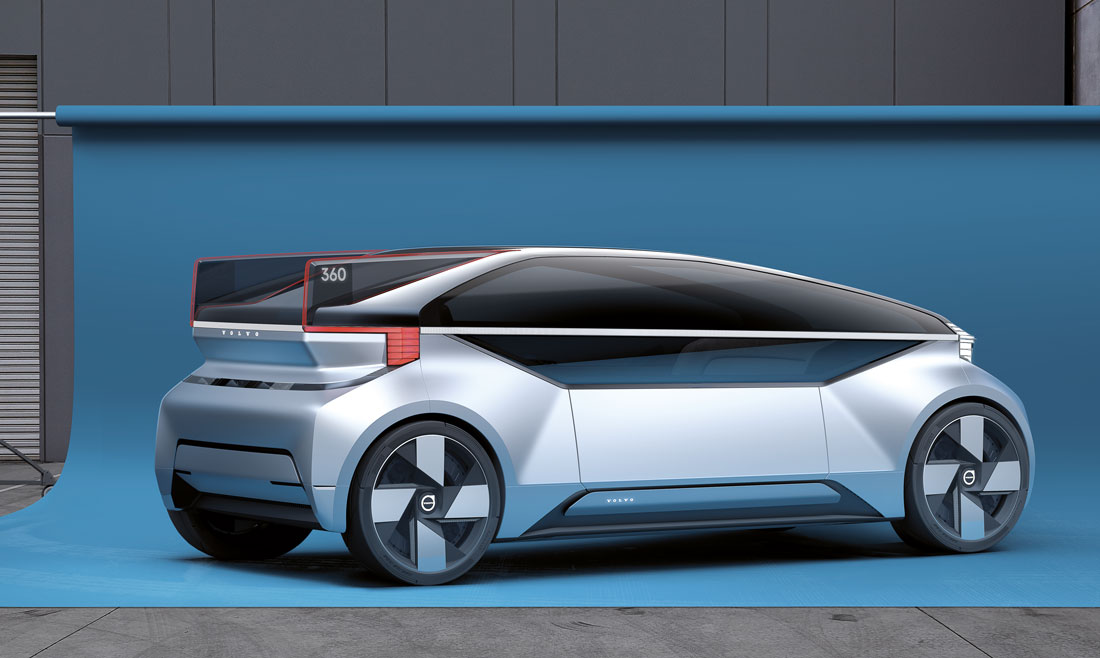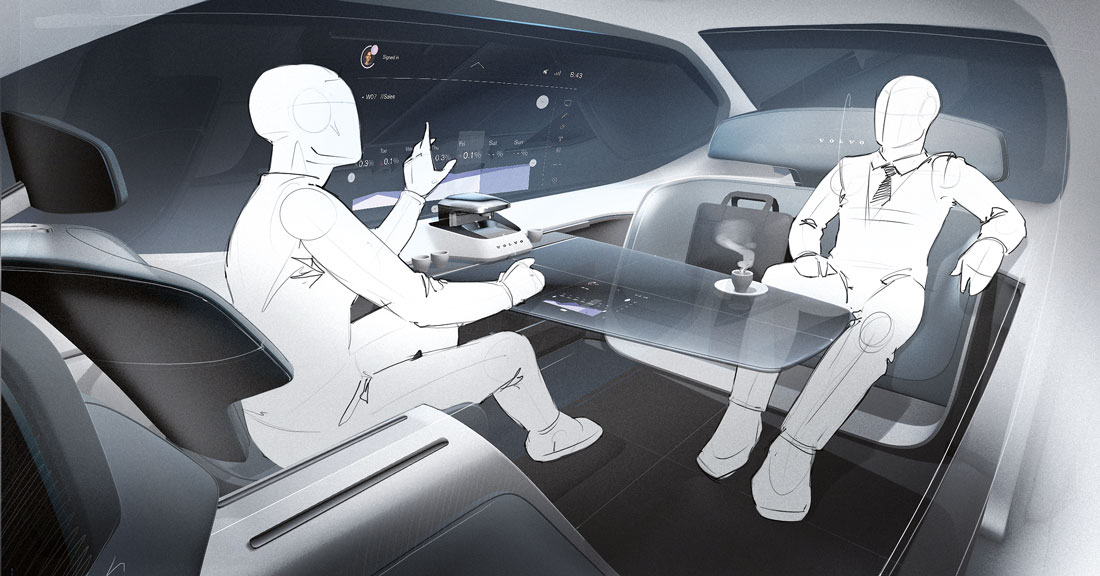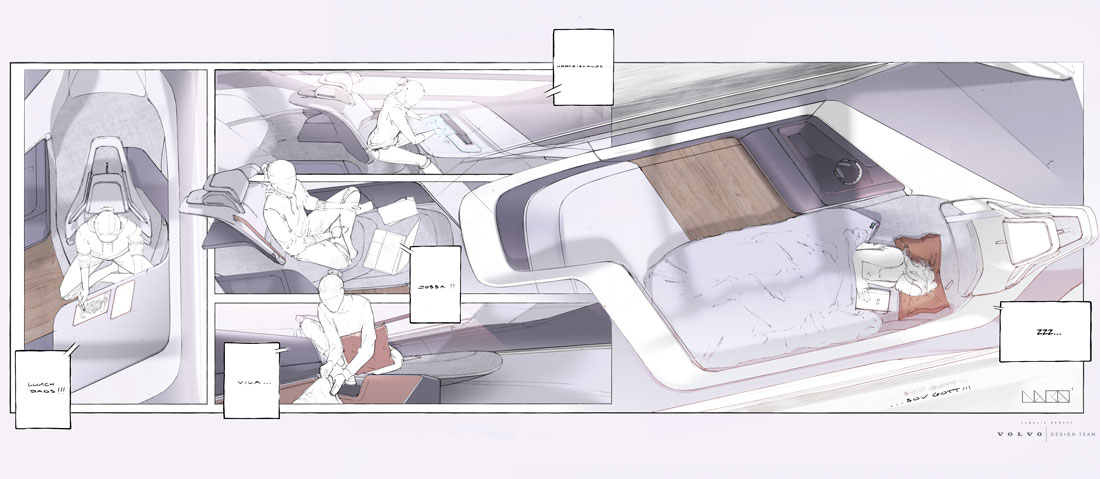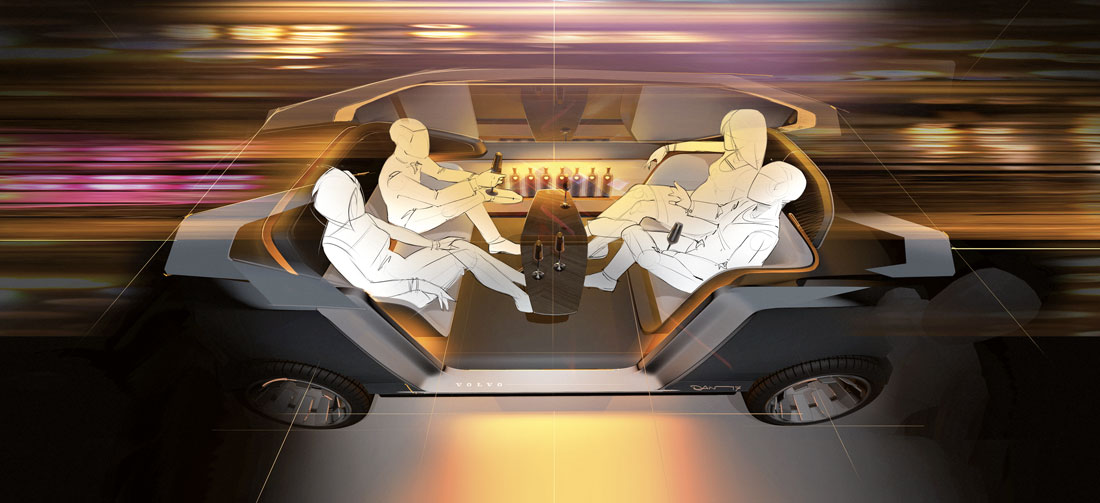From seat-belt to airbag safety blanket: Volvo’s journey into safety, from that 1959 patent for the belts we all use (the Gothenburg company did not keep an exclusive on them, but opened their use to everyone), has come a long way and today also looks to the future. With the airbag safety blanket, in fact, which debuts on the futuristic 360c concept, to protect those who want to sleep while traveling in an autonomous drive vehicle. That concept, as Robin Page says, is “Volvo’s message for the future, for when it comes to giving pleasure and safety to the driver even when he no longer drives”.
Page, Senior Vice President Design, points out that the 360c takes an open approach to the combination of safety and design: “Previously”, he says, “only the physical safety of passengers was considered. Now we have to go one step further. Paying attention to the needs of our customers in a car that does everything by itself. It’s what we call human care”.
“It is a matter”, adds Maximilian Missoni, Vice President Exterior Design, “of integrating all-round safety elements – hence the ‘360’ name we have given to the concept – into cars that, without a driver, can take on different shapes and proportions to maximise interior space”.
It’s a new landmark in an area that has always been Volvo’s strong point: “There are many layers of safety in the history of our cars,” explains Missoni: “We began by analysing how to lose energy in high-speed crashes, then we looked at low-speed crashes, for example when the bonnet buckles. Twenty years ago, safety became an issue, not only just for car occupants but for pedestrians as well, a factor which still determines the design of car fronts. More recently, we have been working on active safety, with radars and sensors integrated into the design”.
Now the future, for a self-drive concept that must respond to four different functions: commuting, business, party and sleeping. Commuters need to be offered a pleasant way to spend their travel time. If the car becomes a surrogate for the office, you need not only a small conference table but also a screen for video projections and – why not? – a coffee machine. The car used for entertainment can have a couple of sofas, a coffee table and start looking more like a living room or a restaurant. And what about sleep? Well, a bed would be useful. And all this in an electric car without a steering wheel or pedals that can reach 300 kilometres an hour.
The project got underway two years ago. After a series of sketches and models, the car was divided into two parts by a horizontal strip intended for communications and, for the interior, the four different usage themes it can assume”. All this in constant collaboration with the designers: “Safety issues”, says Tisha Johnson, Vice President Interior Design, “rather than being imposed in technical terms are discussed with us and set off against our design needs. All on a scientific basis, with reference to world accident statistics: concrete research rather than perception.
(Full article in A&D no. 233)


